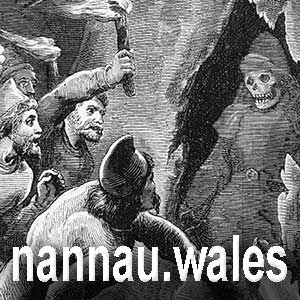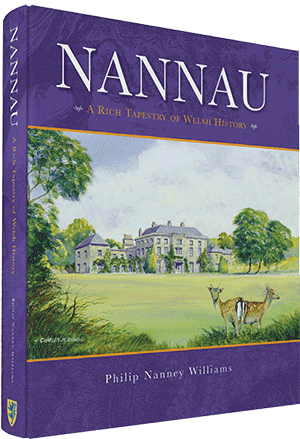Drag & Use the Zoom to See More
Even More Lakes - Further Afield

Llyn Tegid (Bala Lake)
1,123 acres
529 feet
Easy Access
Llyn Tegid is Wales largest natural lake, covering 1.75 square miles. It’s popular for various waterspouts including sailing, canoeing and windsurfing. The hills around make lovely walking and with a large car parking area right beside the eastern edge of the lake, it makes it a ‘must do’ when you’re in the area.
The southern edge is home the narrow gauge Bala Lake Railway which runs to the nearby village of Llanuwchllyn (The Church Above the Lake to give it its English translation). The narrow-gauge track was laid down in 1972, the first to be laid on an old British Rail track bed (the same one which ran on to Dolgellau and Barmouth).
The lake is home to a variety of fish, including Pike which have grown up to 40lbs, Perch up to 10lbs and Eels up to 7lbs. Another fish is the Gwyniaid, a left-over from the last Ice Age. They have adapted to life in the lake and have evolved into a separate recognised species.
The lake now belongs to Gwynedd County Council.
The southern edge is home the narrow gauge Bala Lake Railway which runs to the nearby village of Llanuwchllyn (The Church Above the Lake to give it its English translation). The narrow-gauge track was laid down in 1972, the first to be laid on an old British Rail track bed (the same one which ran on to Dolgellau and Barmouth).
The lake is home to a variety of fish, including Pike which have grown up to 40lbs, Perch up to 10lbs and Eels up to 7lbs. Another fish is the Gwyniaid, a left-over from the last Ice Age. They have adapted to life in the lake and have evolved into a separate recognised species.
The lake now belongs to Gwynedd County Council.

Trawsfynydd Lake
1,180 acres
700 feet
Easy Access
While Llyn Trawsfynydd is 67 acres bigger than Llyn Tegid, that is Wales’ biggest natural lake, while this is Wales’ largest man-made one. It was built to supply water for the Maentwrog hydro-electric power station which was built at the same time.
The whole lake has four dams, one of the main rivers that was dammed being the Prysor. The whole process took four years to build and was completed in 1928 and, when completed, it provided enough electricity for the whole of North Wales.
The lake was drained in 1965 when the Trawsfynydd nuclear power station was built (Britain’s first to be built inland). The deep water of the lake was used as the source of the cooling water needed, although another dam was needed to increase the volume of water. As the water needed to be cold, it needed to be circulated around the whole lake, a process which took between five and eight days. The Maentwrog station was still in use and was using the warmer water nearer the surface.
The lake was used until the nuclear power station was closed and decommissioning work started in 1991, a process that won’t be completed until around 2083. After closure, the water temperature has returned to natural levels which has regenerated some of the plant and fish life.
It is now popular location for fishing, walking and cycling.
The whole lake has four dams, one of the main rivers that was dammed being the Prysor. The whole process took four years to build and was completed in 1928 and, when completed, it provided enough electricity for the whole of North Wales.
The lake was drained in 1965 when the Trawsfynydd nuclear power station was built (Britain’s first to be built inland). The deep water of the lake was used as the source of the cooling water needed, although another dam was needed to increase the volume of water. As the water needed to be cold, it needed to be circulated around the whole lake, a process which took between five and eight days. The Maentwrog station was still in use and was using the warmer water nearer the surface.
The lake was used until the nuclear power station was closed and decommissioning work started in 1991, a process that won’t be completed until around 2083. After closure, the water temperature has returned to natural levels which has regenerated some of the plant and fish life.
It is now popular location for fishing, walking and cycling.

Tal-y-Llyn (Llyn Mwyngil)
223 acres
270 feet
Easy Access
While commonly known as Tal-y-Llyn Lake, its real name has been Llyn Mwyngil since at least the fifteenth century. Technically it is a large glacial ‘ribbon lake’ and is one of the most popular fishing lakes in Wales, not to mention one of the most photographed.
Colonel Vaughan of Hengwrt, Dolgellau built the Tynycornel Hotel in 1844 and supplied two boats which became popular with fly fishermen.
While often thought of with the Talyllyn Railway, that actually ends two and a half miles from the end of the lake
An interesting fact is that the nearby Church (now holiday accommodation) contains the grave of Jenny Jones who was the only woman at the Battle of Waterloo, as she accompanied her officer husband.
Colonel Vaughan of Hengwrt, Dolgellau built the Tynycornel Hotel in 1844 and supplied two boats which became popular with fly fishermen.
While often thought of with the Talyllyn Railway, that actually ends two and a half miles from the end of the lake
An interesting fact is that the nearby Church (now holiday accommodation) contains the grave of Jenny Jones who was the only woman at the Battle of Waterloo, as she accompanied her officer husband.

Llyn Tanygrisiau / Llyn Ystradau
95 acres
600 feet
Easy Access
Like Llyn Trawsfynydd, Tanygrisiau Reservoir (more accurately called Llyn Ystradau) was constructed to produce electricity, this time by harnessing the power from Llyn Stwlan, located another thousand feet higher up in the towering Moelwyn Mountains. Construction of the Ffestiniog Power Station started in 1957 and was completed in 1963.
Water is pumped from the lower to the upper reservoir at times of low demand (usually at night) and the water is then released through pipes to power its four generators. The resulting electricity is then provided to the National Grid at times of high demand. During this time there is a 5.5 meter gain between the low and high water levels.
Constructed in 1960, the main victim of the flooding was the Ffestiniog Railway which ran along the once a boggy valley after exiting its original 660 meter long tunnel. As the route was blocked, a spiral loop was built at Dduallt so that trains could gain enough height to run along a new 262 meter tunnel, exiting above the lake and running along the side of the mountain. This was all completed in 1977 and is the only loop of its kind in Britain.
Water is pumped from the lower to the upper reservoir at times of low demand (usually at night) and the water is then released through pipes to power its four generators. The resulting electricity is then provided to the National Grid at times of high demand. During this time there is a 5.5 meter gain between the low and high water levels.
Constructed in 1960, the main victim of the flooding was the Ffestiniog Railway which ran along the once a boggy valley after exiting its original 660 meter long tunnel. As the route was blocked, a spiral loop was built at Dduallt so that trains could gain enough height to run along a new 262 meter tunnel, exiting above the lake and running along the side of the mountain. This was all completed in 1977 and is the only loop of its kind in Britain.

Llyn Cwmorthin
22 acres
1,070 feet
Easy Access
Cwmorthin is about 45 minute’s drive away, but well worth a visit. There are several places to park at Tanygrisiau; there is a large car park as you drive towards the station, a small station car park, one by the popular Café and one at the quarry entrance. What’s more, they are all free. Tanygrisiau is also a station on the Ffestiniog Railway, near Blaenau Ffestiniog.
You may think a slate quarry is the last place to spend a peaceful afternoon wandering around, especially with the high-energy goings on at nearby Llechwedd and its trampolines, zip-wires and and downhill mountain bike tracks, but Cwmorthin has a tranquil charm with its abandoned buildings and beautiful lake all sitting in a slate-lined mountain bowl. It’s the perfect place to bring your camera for those atmospheric shots.
Slate extraction began at Cwmorthin in 1810 with work carrying on right up to 1997, although there were long periods when the site fell silent during its latter years with various transfers of ownership.
Only around 10% of the slate made it out of the quarry, so the other 90% can be seen all around (and high above). With around 96,000 tons of slate leaving between 1861 and 1876, this makes around a million tonnes of waste in just those fifteen years.
It was a dangerous place to work with 21 deaths out of a workforce of 550 between 1875 and 1893 alone. This gave the quarry the nickname of “The Slaughterhouse”.
Read about Cwmorthin at cwmorthin.org.
You may think a slate quarry is the last place to spend a peaceful afternoon wandering around, especially with the high-energy goings on at nearby Llechwedd and its trampolines, zip-wires and and downhill mountain bike tracks, but Cwmorthin has a tranquil charm with its abandoned buildings and beautiful lake all sitting in a slate-lined mountain bowl. It’s the perfect place to bring your camera for those atmospheric shots.
Slate extraction began at Cwmorthin in 1810 with work carrying on right up to 1997, although there were long periods when the site fell silent during its latter years with various transfers of ownership.
Only around 10% of the slate made it out of the quarry, so the other 90% can be seen all around (and high above). With around 96,000 tons of slate leaving between 1861 and 1876, this makes around a million tonnes of waste in just those fifteen years.
It was a dangerous place to work with 21 deaths out of a workforce of 550 between 1875 and 1893 alone. This gave the quarry the nickname of “The Slaughterhouse”.
Read about Cwmorthin at cwmorthin.org.

Llyn Mair
14 acres
258 feet
Easy Access
Views to this lake could not be easier as it’s situated right beside the B-4410 which is accessed just behind The Oakeley Arms Hotel near Maentwrog. Carry on this road for about a mile and you can park right beside the road (although the parking is limited).
While the views from the road are very pretty, if you carry on another mile, there is a quiet car parking area in the woods where there are tracks around the back of the lake, but first you have to walk past its sister lake Hafod y Llyn (which is no bad thing). The various footpaths and forest tracks meander through the woods and up to high viewpoints where you can see Harlech Castle and over to Porthmadog.
It’s a very shallow lake, only five feet deep.
While the views from the road are very pretty, if you carry on another mile, there is a quiet car parking area in the woods where there are tracks around the back of the lake, but first you have to walk past its sister lake Hafod y Llyn (which is no bad thing). The various footpaths and forest tracks meander through the woods and up to high viewpoints where you can see Harlech Castle and over to Porthmadog.
It’s a very shallow lake, only five feet deep.

Hafod y Llyn
4 acres
412 feet
Easy Access
Hafod y Llyn is best visited at the same time as Llyn Mair. The Ffestiniog Railway passes within one hundred meters of the lake, although you cannot see it from the train as you can with Llyn Mair. Tan-y-Bwlch station is also nearby, so there is a good chance of seeing a little train on your walk through the woods, just keep an ear out for the whistles and take a time-table with you so you know when they are passing
These two lakes and Tan-y-Bwlch make it an interesting place to while away a few hours.
These two lakes and Tan-y-Bwlch make it an interesting place to while away a few hours.
Access is listed based on access to a car. Lakes marked as Easy are near a road.
All photographs are Copyright © Ian King.
All photographs are Copyright © Ian King.
Dolgellau.Wales




